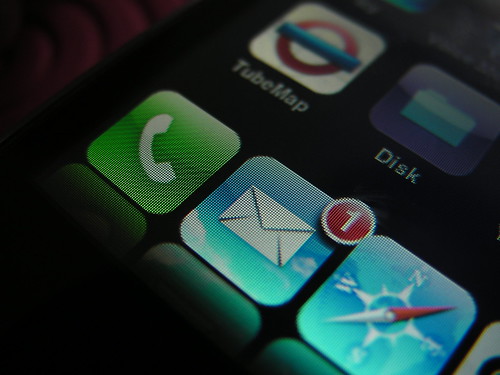 I am, I freely admit, a gadget nerd. I’ve never had much interest in cars, still less in power tools (which many men seem to find enthralling). No, it is smaller computer gadgetry which fascinates me. My first personal computer was the Sinclair ZX80, almost 30 years ago, which had 1k of RAM and whose screen went blank when you touched a key. Now I am the proud owner of a Mac, and it is also the smaller devices such as cameras, audio recorders, MP3 players and hand-held computers (especially my iPhone) which excite and interest me. I’d have to add also that while I may take an interest in all sorts of technology, what I really value is technology that is useful. I like software which claims to organise my life, and speeds up the tasks I have to perform. I have very little interest in computer games, but something which can make my life easier (at least in theory) is something I would want to acquire.
I am, I freely admit, a gadget nerd. I’ve never had much interest in cars, still less in power tools (which many men seem to find enthralling). No, it is smaller computer gadgetry which fascinates me. My first personal computer was the Sinclair ZX80, almost 30 years ago, which had 1k of RAM and whose screen went blank when you touched a key. Now I am the proud owner of a Mac, and it is also the smaller devices such as cameras, audio recorders, MP3 players and hand-held computers (especially my iPhone) which excite and interest me. I’d have to add also that while I may take an interest in all sorts of technology, what I really value is technology that is useful. I like software which claims to organise my life, and speeds up the tasks I have to perform. I have very little interest in computer games, but something which can make my life easier (at least in theory) is something I would want to acquire. So you won’t be surprised to learn that I have a SatNav, and value it highly. It’s not just the fact that it can help me find a new and unfamiliar destination that is useful. It is also its ability to navigate me round road blocks and traffic hold ups and the inevitable missed turns.
But recently something weird has happened.
On three recent journeys, to places I know, but where the routes are not very familiar, my SatNav has taken me by a scenic, but circuitious (and occasionally alarming) route. On a journey from Congleton to Prestbury in Cheshire, then from Stoke-on-Trent to Macclesfield, and most recently from Bangor to Penmaenmawr in North Wales, the SatNav has given me a preferred “Fastest” route, which has taken me away from dual carriageways and A Roads, up steep hills, down single track lanes, and - most recently - through a fast flowing ford (which was not indicated on the monitor). In every case I did indeed ‘reach my destination’ and the route did not seem to much longer (in time) than the A-road routes, which seem to have been preferred for the return journey. However, as two of the journeys were in the dark, down unlit country roads, I have been - to put it mildly - a little concerned.
Now I should make it quite that in all cases I did specify ‘fastest’ and not ‘shortest’ route, which might (otherwise) have explained the scenic choices. Further, I know very well that early into the journey I could have asked the machine to recalculate an alternative route when the preferred one seemed a little odd. Or I could even have trusted my own judgement rather than slavishly obeying the little voice inside the box and the pictures on screen.
But what lesson should I draw from these exciting journeys? I wonder, first, why these wonderful pieces of software, if they can include information about speed cameras, cannot also allow me to prefer routes with street lighting (or even do this for me automatically after the hours of darkness). I also wonder whether it is such a good idea buy the newly released TomTom for my iPhone, which is quite expensive and which I do not really need, but seemed an exciting addition to the computer in my pocket. I am also musing upon the homiletic possibilities of these recent journeys, along the lines of comparing life to a journey etc - mm … a more interesting illustration than the message itself, so perhaps not especially promising.
No. If there is any moral to the story it has to be along different lines. It should not simply draw comparisons, or propose software updates. A much better lesson for me would be this: “Technology good, Humans better”.


